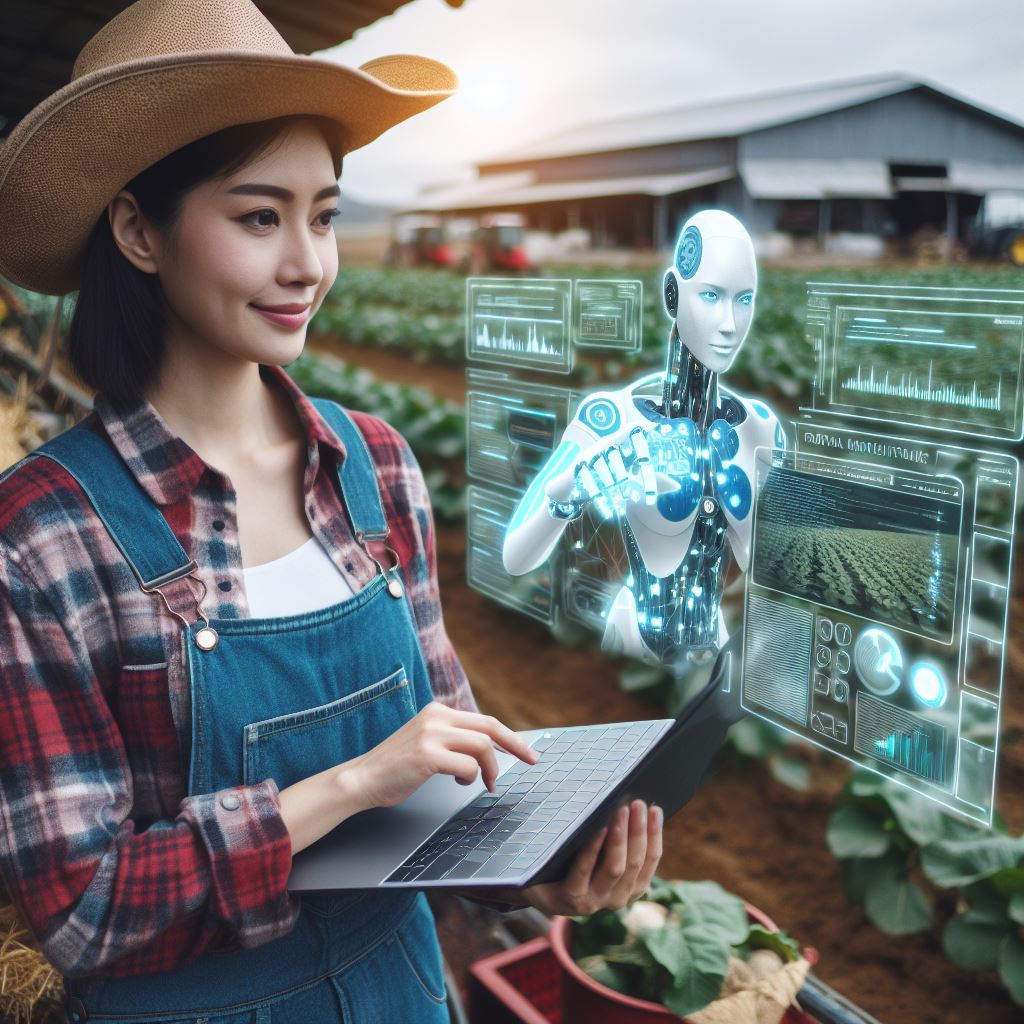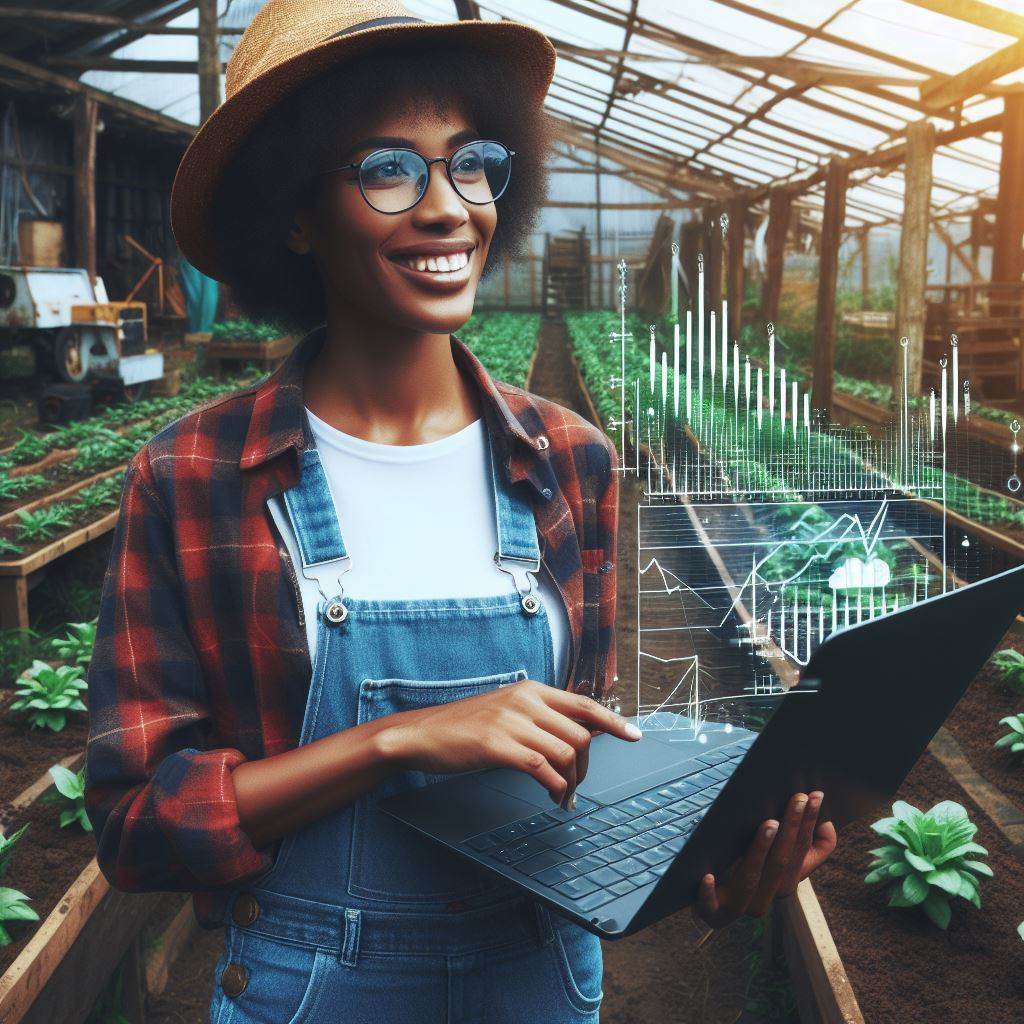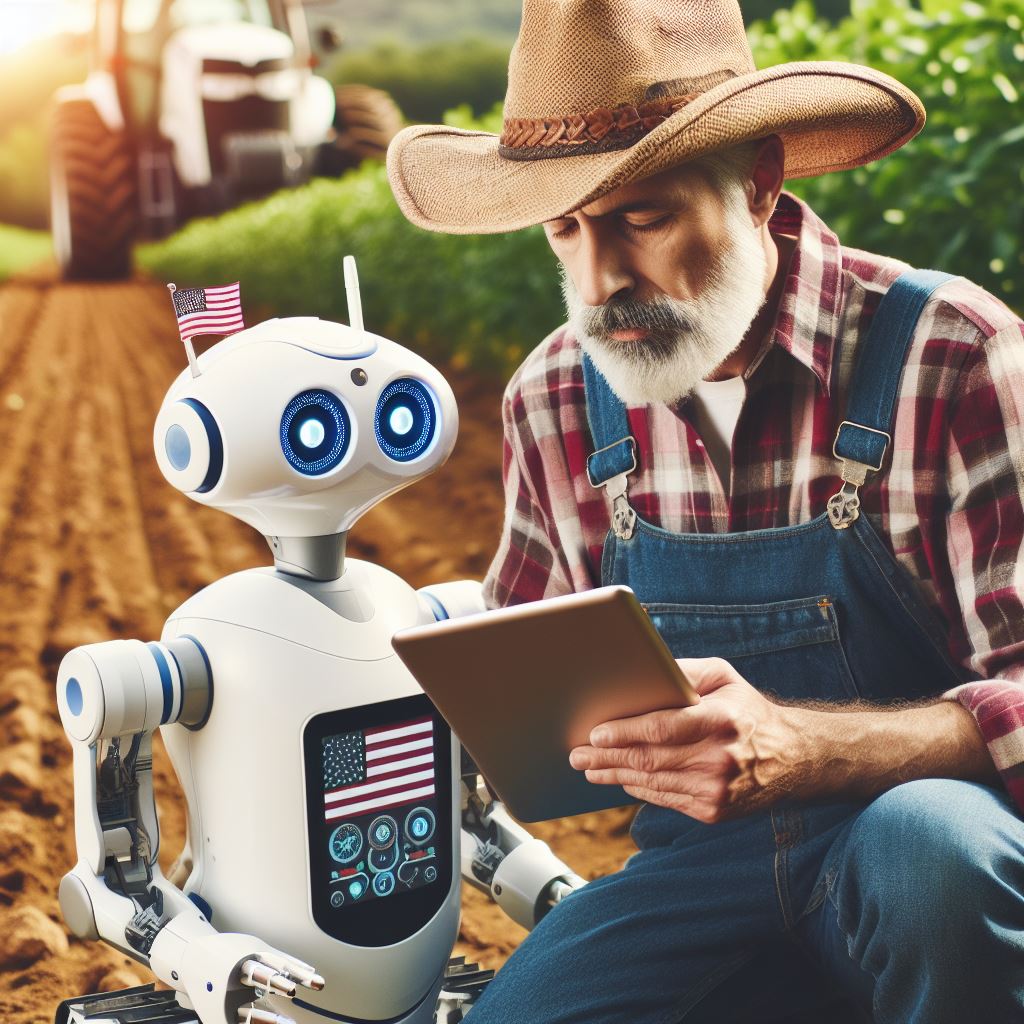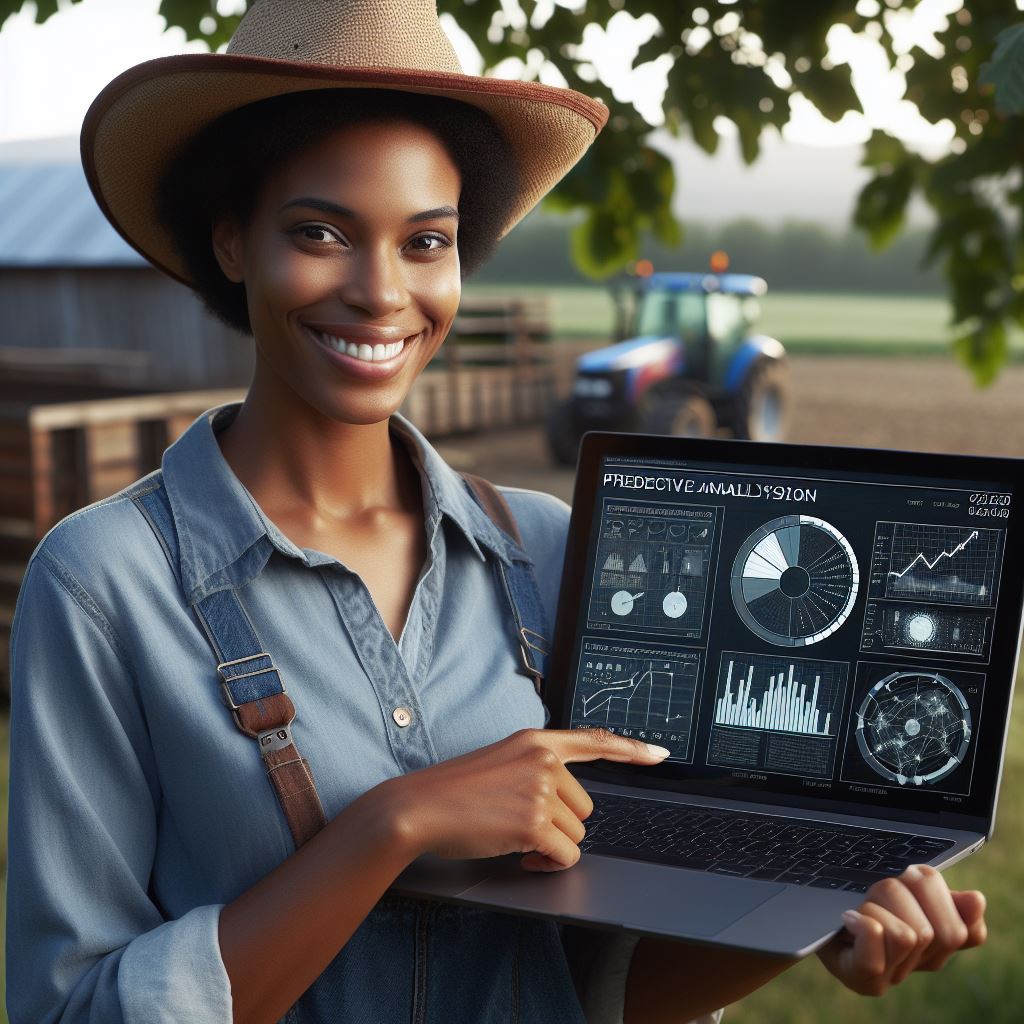Introduction
Significance of agriculture in the modern world
In today’s modern world, agriculture holds immense significance as it is responsible for feeding and providing resources for the growing global population.
The role of agriculture extends beyond food production and encompasses economic, social, and environmental aspects.
With the increasing demand for sustainable and efficient farming practices, the need for innovation in agriculture becomes even more paramount.
Transition into the role of drone innovations in elevating agriculture
One such transformative innovation that is revolutionizing the agricultural landscape is the use of drones.
These unmanned aerial vehicles bring a plethora of opportunities for elevating agriculture to new heights.
Drones equipped with advanced sensors and cameras offer valuable insights into crop health, soil moisture, and pest infestations, enabling farmers to make data-driven decisions and optimize their farming practices.
By providing a bird’s-eye view of the fields, drones eliminate the need for manual labor and time-consuming crop monitoring.
These autonomous aerial vehicles can cover large areas quickly, saving farmers both time and money.
Drones facilitate precision agriculture by capturing high-resolution images, mapping fields, and monitoring crop growth.
This information helps farmers identify areas of concern and take proactive measures to mitigate potential issues, such as adjusting irrigation or applying targeted pesticides.
Moreover, drones equipped with spraying capabilities can precisely deliver fertilizers, pesticides, and herbicides, reducing chemical usage and minimizing environmental impact.
This targeted application ensures that the inputs are distributed efficiently, leading to better crop yields and reduced costs.
Basically, the integration of drone innovations in agriculture presents a promising future for sustainable and efficient farming practices.
The use of drones in crop monitoring, mapping, and precision agriculture can greatly improve productivity, optimize resource utilization, and contribute to a more environmentally friendly approach to farming.
As the technology continues to evolve, the potential benefits of drones in elevating agriculture will only continue to grow.
Transform Your Agribusiness
Unlock your farm's potential with expert advice tailored to your needs. Get actionable steps that drive real results.
Get StartedThe Current Landscape of Agriculture
Overview of traditional farming methods and challenges
- Farmers rely on manual labor and traditional methods to cultivate crops.
- These methods are time-consuming, labor-intensive, and often yield inconsistent results.
- Pests, diseases, and extreme weather conditions pose significant challenges to traditional farming.
- Large-scale agriculture requires extensive land and water resources, which are becoming scarce.
- Traditional farming methods also contribute to soil degradation and environmental pollution.
- Small-scale farmers face difficulties in accessing markets and lack proper infrastructures.
- Overall, traditional farming faces numerous challenges that limit its productivity and sustainability.
The need for technological advancements
- Technological advancements can revolutionize the agricultural sector and overcome its challenges.
- Drones, as innovative tools, have the potential to elevate agriculture to new heights.
- These unmanned aerial vehicles offer various applications in precision agriculture.
- Using drones, farmers can gather real-time data on crops, soil, and weather conditions.
- Precise information empowers farmers to make better decisions regarding irrigation, fertilization, and pest control.
- Drones equipped with advanced imaging technology can detect crop diseases and monitor crop health.
- Such early detection enables targeted interventions and minimizes crop losses.
Crop management
- Furthermore, drones can efficiently spray fertilizers and pesticides, reducing input costs and environmental impact.
- The ability to cover large areas quickly makes drones ideal for crop surveillance and monitoring.
- These advancements save time, increase efficiency, and enhance overall agricultural productivity.
- Drones also provide a cost-effective solution for small-scale farmers who lack resources.
- By enabling precision farming, drones can improve crop quality, yield, and profitability.
Livestock monitoring and herd management
- Beyond crop management, drones aid in livestock monitoring and herd management.
- They assist in identifying sick or injured animals, optimizing feeding practices, and ensuring herd safety.
- The integration of drones with other technologies like AI and big data analytics further enhances their impact.
- Data analysis enables predictive modeling, leading to better decision-making and resource allocation.
- Moreover, drones can contribute to sustainable farming practices by reducing chemical usage and optimizing resource allocation.
- As technology continues to advance, drones have the potential to transform agriculture into a more efficient and sustainable industry.
The current landscape of agriculture is characterized by traditional farming methods that face numerous challenges.
However, the need for technological advancements has become evident to address these challenges and elevate agriculture.
Drones, with their capabilities in precision agriculture, offer innovative solutions to enhance productivity, sustainability, and profitability.
By providing real-time data, enabling targeted interventions, and optimizing resource allocation, drones have the potential to revolutionize the way farming is approached.
As these technologies continue to evolve, the future of agriculture looks promising with drones playing a crucial role in shaping a more advanced and sustainable industry.
Read: Agri Drones: From Planting to Harvesting
Introduction to Drone Technology in Agriculture
Definition and Explanation of Drones
Drones, also known as unmanned aerial vehicles (UAVs), are remotely operated aircraft used in various industries, including agriculture.
These small, lightweight devices are equipped with cameras and sensors that enable them to collect and transmit data.
Advantages of Using Drones in Agriculture
- Increased Efficiency: Drones can cover large areas of farmland quickly and efficiently, providing farmers with valuable data and insights in a shorter amount of time compared to traditional methods.
- Cost-Effective: The use of drones in agriculture eliminates the need for costly manned operations such as helicopters or planes, making it a more affordable option for farmers.
- Precision Farming: Drones equipped with advanced sensors and imaging technology can gather highly accurate data on crop health, soil conditions, and irrigation needs. This data can help farmers optimize their farming practices and reduce waste of resources.
- Improved Crop Monitoring: Drones can monitor crops throughout their growth cycle, providing real-time updates on crop health, identifying disease outbreaks, and detecting nutrient deficiencies. This enables farmers to take immediate action, increasing the chances of higher yields.
Examples of Drone Applications in Farming
- Crop Health Assessment: Drones equipped with multispectral or thermal cameras can capture high-resolution images of crops. By analyzing this data, farmers can assess the health of their crops, identifying areas that need attention or treatment.
- Precision Spraying: Drones equipped with spraying systems can precisely distribute fertilizers, pesticides, or herbicides to specific areas of the field as needed. This reduces chemical waste and minimizes environmental impact.
- Irrigation Management: Thermal cameras mounted on drones can detect variations in crop temperature, indicating potential water stress. By identifying specific areas in need of irrigation, farmers can conserve water and optimize crop growth.
- Livestock Monitoring: Drones equipped with cameras can monitor livestock, ensuring their safety, and detecting any signs of distress or disease. This enables farmers to take prompt action and provide timely care to their animals.
- Wildlife Management: Drones can aid in wildlife management by monitoring animal populations, tracking migration patterns, and helping to prevent damage to crops caused by wildlife.
In short, drone technology has revolutionized the agricultural industry by offering numerous benefits to farmers.
The efficiency, cost-effectiveness, and precision of drones make them indispensable tools in modern agriculture.
From crop health assessment to precision spraying, the applications of drones in farming are vast and offer significant advantages in improving yields and reducing environmental impact.
As drone technology continues to evolve, we can expect even more innovative uses in agriculture, leading to further advancements in the industry as a whole.
Read: Innovative Agri-Tech: Drones Changing Agriculture
Improving Crop Monitoring and Management
Detailed explanation of how drones assist in crop monitoring
Drones have become an indispensable tool for crop monitoring, providing farmers with accurate and timely information.
These unmanned aerial vehicles can be equipped with various sensors and cameras to capture high-resolution images of crops.
With drones, farmers can easily survey their fields and identify potential issues such as pest infestation, disease outbreaks, or nutrient deficiencies.
The images captured by drones can be analyzed to detect changes in crop health, allowing farmers to take proactive measures.
Moreover, drones can cover large areas of farmland in a short period, saving time and reducing labor costs.
They can fly at different altitudes and capture images from different angles, providing a comprehensive view of the entire field.
Benefits of using drones for assessing crop conditions
Using drones for assessing crop conditions offers numerous benefits to farmers.
Firstly, it allows for quick and efficient crop monitoring, enabling farmers to promptly address any problems that may arise.
Drones provide real-time data, allowing farmers to make immediate decisions and take appropriate actions.
This timely response can significantly improve crop yield and overall productivity.
Additionally, drones can give farmers a detailed and precise understanding of their crops’ conditions.
Showcase Your Farming Business
Publish your professional farming services profile on our blog for a one-time fee of $200 and reach a dedicated audience of farmers and agribusiness owners.
Publish Your ProfileThey can capture data on plant height, canopy cover, and even the chlorophyll levels in leaves, providing valuable insights for better crop management.
By utilizing drones, farmers can also save on resources such as water and fertilizers.
With accurate crop monitoring, farmers can ensure that these resources are applied only where and when needed, reducing waste and environmental impact.
Use cases of drones in field analysis and precision farming
Drones have proven to be incredibly useful in various field analysis and precision farming applications.
One prominent use case is the identification and monitoring of crop diseases.
By flying drones equipped with hyperspectral imaging sensors over their fields, farmers can detect early signs of diseases that may not be visible to the naked eye.
This early detection enables prompt intervention, minimizing the spread of diseases and potential crop damage.
Another use case is the assessment of soil conditions.
Drones can collect data on soil moisture levels, temperature, and nutrient content, allowing farmers to optimize irrigation and fertilization practices.
This precision agriculture approach leads to improved crop health and resource efficiency.
Furthermore, drones can be utilized for yield estimation.
By capturing accurate data on crop growth and density, farmers can estimate their yields accurately, aiding in decision-making processes like harvest planning and market forecasting.
Generally, drones have revolutionized crop monitoring and management in agriculture.
Their ability to provide detailed and timely data on crop conditions empowers farmers to make informed decisions, leading to higher yields and more sustainable practices.
With the continuing advancements in drone technology, the future of agriculture looks promising as drones continue to elevate the industry.
Read: Drones in Agri: Boosting Crop Efficiency
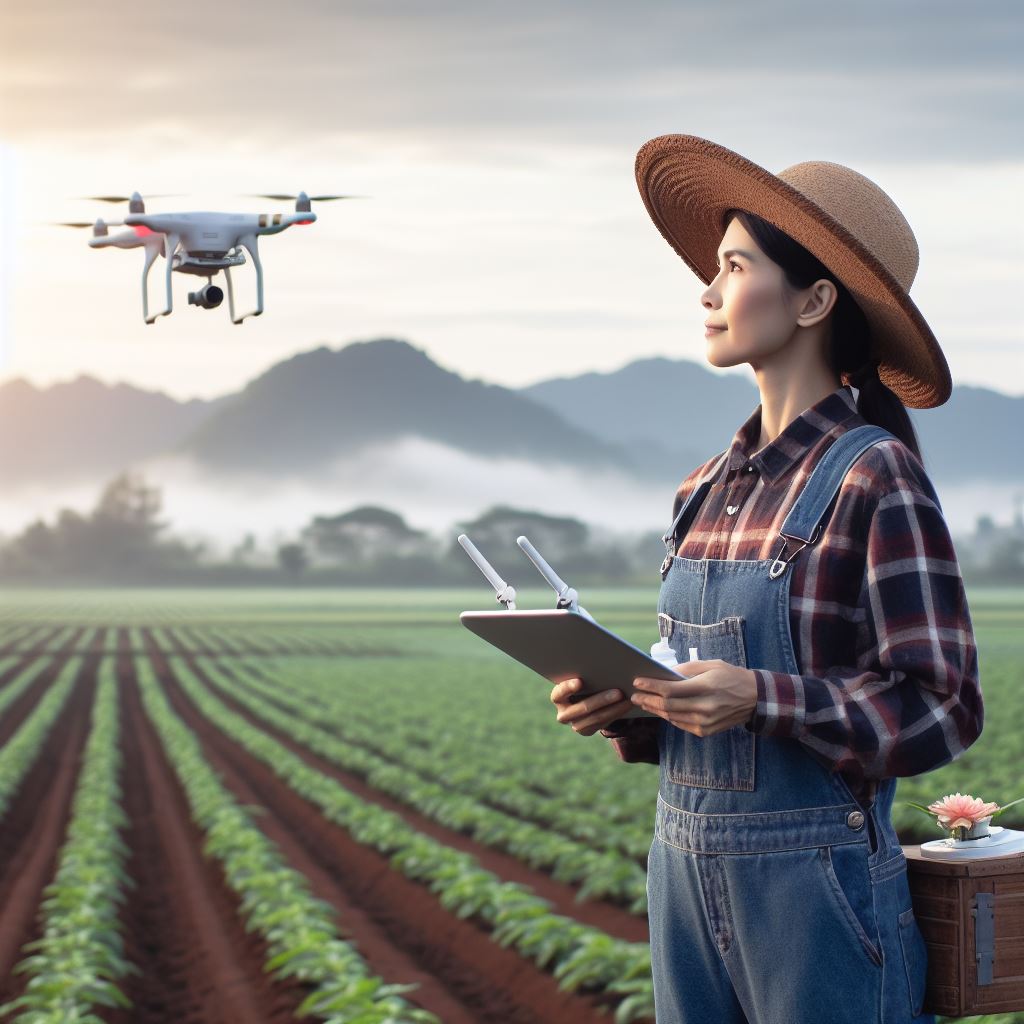
Enhancing Pest Control and Disease Prevention
Importance of pest control in agriculture
Pest control plays a crucial role in agriculture as it helps prevent crop damage and loss.
Pests such as insects, rodents, and weeds can cause significant harm to crops, affecting overall yield and quality.
Without proper pest control measures, farmers may struggle to protect their crops and meet the demands of the market.
How drones aid in pest detection and prevention
Drones have emerged as a game-changer in agriculture, especially in pest detection and prevention.
Equipped with high-resolution cameras and sensors, drones can provide real-time imagery and data about crop health.
This allows farmers to identify pest infestations at an early stage, enabling immediate and targeted intervention.
Furthermore, drones can cover large areas quickly and efficiently, offering a cost-effective solution for pest monitoring.
Examples of drones being utilized for pest management in crops
- Aphid detection: Drones equipped with multispectral cameras can detect aphid infestations in cereal crops. These drones capture images of the crops, which are then analyzed using advanced image recognition software. This technology enables farmers to spot aphids, deploy targeted measures, and prevent widespread damage.
- Weed control: Drones equipped with herbicide sprayers can precisely target and eliminate weeds. Using GPS coordinates, the drones navigate through fields and identify patches of weeds. They then spray herbicides only on the targeted areas, reducing chemical usage and minimizing environmental impact.
- Disease monitoring: Drones equipped with thermal or hyperspectral cameras can detect crop diseases. By analyzing temperature variations or specific spectral signatures, these drones can identify diseased plants. Early detection allows farmers to take necessary actions, such as isolating infected plants or applying fungicides.
- Bird scaring: Drones can also be used for bird control in agricultural fields. By using noise-emitting devices or visual deterrents, drones can scare away birds that feed on crops. This helps minimize crop losses caused by bird damage, ensuring better yields for farmers.
Essentially, the utilization of drones in pest management provides farmers with timely and accurate information.
By employing these innovative tools, farmers can detect pests and diseases early, leading to effective prevention strategies.
This not only minimizes crop losses but also reduces the reliance on potentially harmful pesticides.
As drone technology continues to advance, it holds great potential to revolutionize pest control in agriculture.
By embracing drone innovations, the agricultural industry can elevate its pest management practices and ensure sustainable food production.
Read: Drones: Transforming Agricultural Practices
Optimizing Irrigation and Water Management
The role of water in agriculture
Water is an essential resource in agriculture, playing a vital role in crop growth and development.
It ensures plant hydration and facilitates nutrient absorption.
Adequate water supply is necessary as it affects the overall productivity and quality of agricultural produce.
How drone technology helps in water management and irrigation
- Precise mapping and analysis: Drones equipped with advanced sensors can accurately map agricultural fields. This enables proper identification of water distribution and potential areas for improvement.
- Real-time data collection: Drones can collect real-time data on soil moisture levels, plant health, and overall water requirements. This information helps farmers make data-driven decisions for efficient irrigation practices.
- Automated irrigation systems: Drones can be integrated with automated irrigation systems, ensuring targeted application of water based on specific crop needs. This prevents water wastage and over-irrigation.
- Monitoring water resources: Drones can monitor water resources such as reservoirs, rivers, and irrigation channels. They provide valuable insights on water availability, facilitating effective water management.
- Detecting leakages and blockages: With thermal imaging capabilities, drones can detect leakages and blockages in irrigation systems. Timely identification and repair of such issues optimize water usage.
Successful cases of drones enhancing water usage efficiency
- Vineyard optimization: In California’s vineyards, drones have significantly improved water management. They accurately determine water distribution, ensuring vines receive the right amount of water and preventing wastage.
- Rice crop management: In Japan, drones equipped with multispectral cameras monitor rice paddies. They assess water levels and identify areas that require additional irrigation or drainage, resulting in higher yields.
- Precision agriculture in dry regions: Drones have revolutionized farming in arid regions. By precisely measuring water requirements and optimizing irrigation, farmers can cultivate crops that were previously unsustainable.
- Managing large-scale farms: Drones help manage vast agricultural areas efficiently. They provide a bird’s-eye view, allowing farmers to identify water stress zones and implement targeted irrigation strategies, saving time and resources.
In essence, drone technology immensely contributes to optimizing irrigation and water management in agriculture.
Its ability to provide accurate data, automate irrigation systems, and detect issues ensures efficient water usage.
Successful cases prove the positive impact of drones in enhancing water usage efficiency in various agricultural contexts.
Precision Livestock Farming with Drones
The concept of precision livestock farming
Precision livestock farming is a modern approach that utilizes advanced technologies to enhance animal management and welfare.
How drones assist in monitoring livestock health and behavior
Drones play a crucial role in monitoring livestock by providing real-time data on their health and behavior.
Drones equipped with thermal cameras can detect changes in body temperature, indicating potential illnesses.
By capturing aerial footage, drones enable farmers to analyze herd behavior for early signs of distress.
Real-life examples of drones used in precision livestock farming
One example is the use of drones in monitoring pasture quality and livestock grazing patterns.
Showcase Your Farming Business
Publish your professional farming services profile on our blog for a one-time fee of $200 and reach a dedicated audience of farmers and agribusiness owners.
Publish Your ProfileDrones equipped with multispectral sensors can assess the nutritional value of grazing areas, optimizing livestock diets.
In Australia, drones have been employed to locate and monitor feral animals that pose a threat to livestock.
Drones in Denmark are used for visual inspections of pig herds, ensuring their well-being and identifying potential health issues.
In the Netherlands, drones have been employed to track and shepherd cows, minimizing labor requirements.
With advancements in technology, drones continue to revolutionize precision livestock farming, improving animal welfare and farm efficiency.
Overcoming Challenges and Future Perspectives
Concerns regarding drone utilization in agriculture
- Safety concerns: Agricultural drones should be equipped with safety features such as obstacle detection systems.
- Privacy issues: Regulations should be implemented to protect farmers’ privacy and prevent misuse of data collected by drones.
- Noise pollution: Efforts should be made to reduce the noise generated by drones through the use of quieter propellers.
- Hacking and cyber threats: Strong cybersecurity measures need to be implemented to safeguard drones and the data they collect.
Potential limitations and possible solutions
- Limited battery life: Advances in battery technology can help increase the flight time of agricultural drones.
- Payload capacity: Developing drones with higher payload capacity can allow for the delivery of more advanced sensors and equipment.
- Weather conditions: Drones should be designed to withstand various weather conditions and have enhanced stability features.
- High cost: Collaboration between researchers, manufacturers, and government organizations can help reduce the cost of agricultural drones.
Expanding possibilities and the future of drone innovations in agriculture
- Crop monitoring: Drones equipped with advanced imaging sensors can provide real-time data on crop health and yield estimation.
- Precision spraying: Drones can be used for targeted spraying of fertilizers, pesticides, and herbicides, reducing chemical usage and environmental impact.
- Livestock monitoring: Drones can be used to monitor livestock, detect diseases, and provide farmers with valuable insights for better herd management.
- Crop pollination: Autonomous drones can be used as pollinators, especially in areas facing a decline in natural pollinators like bees.
- Crop seeding: Drones can be programmed to precisely distribute seeds, ensuring optimal plant spacing and reducing manual labor.
- Remote sensing: Drones equipped with thermal sensors and multispectral cameras can help identify and manage irrigation issues.
- Disaster management: Drones can be utilized to assess damage after natural disasters and guide relief efforts in affected areas.
- Autonomous operation: Future drone innovations can include AI-powered autonomous flight, allowing drones to operate without human intervention.
- Swarm technology: Multiple drones working together can cover larger areas and collaborate on data collection and analysis.
- Integration with other technologies: Drones can be combined with AI, machine learning, and big data analytics for advanced agricultural insights and decision-making.
In a nutshell, while there may be challenges and limitations in the use of drones in agriculture, the potential benefits and possibilities are vast.
Addressing concerns, finding solutions, and embracing future perspectives can pave the way for the widespread adoption and integration of drone innovations in agriculture, improving efficiency, sustainability, and productivity for farmers worldwide.
Learn More: Precision Planting: The Tech Evolution
Conclusion
Recap of the advantages and applications of drone technology in agriculture
Drone technology has revolutionized agriculture by providing farmers with valuable data and efficient solutions.
Drones can capture high-resolution images and collect data on plant health, soil moisture levels, and crop yield.
This data helps farmers make informed decisions, optimize crop management, and increase overall productivity.
Additionally, drones can be used for spraying fertilizers, pesticides, and herbicides, minimizing environmental impact and reducing labor costs.
They can cover large areas quickly and reach inaccessible or difficult terrain, ensuring uniform application and reducing chemical waste.
Acknowledgment of the potential impact of drone innovations
The potential impact of drone innovations in agriculture is immense.
By integrating advanced sensors, artificial intelligence, and machine learning algorithms, drones can continuously monitor and analyze crop conditions, detect diseases or pests early on, and provide timely interventions.
This can help prevent crop losses, increase yields, and optimize resource use, contributing to sustainable farming practices.
Moreover, drone technology can assist in precision agriculture, where farmers can tailor their practices to specific areas of their fields.
By mapping variability in soil fertility, moisture levels, and plant stress, drones enable targeted applications of inputs, reducing waste and maximizing resource efficiency.
Encouragement for further exploration and adoption of drone technology in farming
As the agricultural industry faces increasing challenges, such as climate change, population growth, and labor shortages, the adoption of drone technology offers a promising solution.
It is vital that farmers and policymakers embrace this technology and invest in research, innovation, and regulatory frameworks to enable its widespread adoption.
By exploring and adopting drone technology in farming, we can elevate agriculture to new heights, improving productivity, sustainability, and food security for a growing global population.

